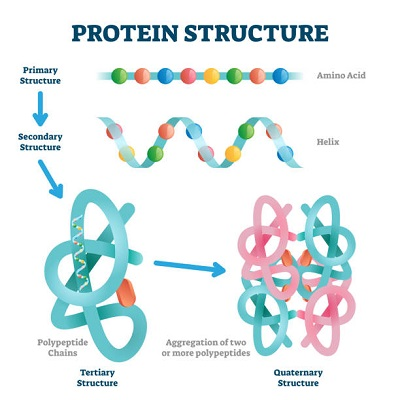Proteins are essential macromolecules that play a critical role in virtually every biological process. They are responsible for a wide array of functions, including catalyzing biochemical reactions, providing structural support, regulating cells, and aiding in immune responses. But what exactly are proteins made of? The building blocks of proteins are amino acids—small organic molecules that link together to form these complex and versatile structures. This article will explore the components of proteins, the significance of amino acids, and how they contribute to protein structure and function.
1. Amino Acids: The Basic Units of Proteins
Amino acids are the fundamental building blocks of proteins. There are 20 different amino acids commonly found in nature, each with a unique structure that gives proteins their diverse range of functions. All amino acids share a common core structure but differ in their side chains, known as R groups, which give each one distinct chemical properties.- Structure of Amino Acids:
- A central carbon atom (the alpha carbon) bonded to four groups:
- Amino Group (–NH₂): This is a nitrogen atom attached to two hydrogen atoms.
- Carboxyl Group (–COOH): A carbon atom double-bonded to an oxygen and single-bonded to a hydroxyl group.
- Hydrogen Atom (–H): A single hydrogen attached to the central carbon.
- Side Chain (R Group): This is what differentiates one amino acid from another. The R group can range from a simple hydrogen atom (as in glycine) to more complex structures like a ring (as in phenylalanine).
- A central carbon atom (the alpha carbon) bonded to four groups:
2. Peptide Bonds: Linking Amino Acids Together
Amino acids form proteins through a process called polymerization, where they link together in long chains. This occurs via a type of bond known as a peptide bond, which is formed when the amino group of one amino acid reacts with the carboxyl group of another, releasing a molecule of water. The resulting chain of amino acids is called a polypeptide.- Formation of Peptide Bonds: The carboxyl group of one amino acid reacts with the amino group of the next, creating a covalent bond and forming the backbone of the protein chain. This process is called a dehydration synthesis because it involves the loss of a water molecule.
3. Protein Structure: Four Levels of Organization
The function of a protein is determined by its structure, which can be organized into four distinct levels:- Primary Structure: This is the unique sequence of amino acids in a polypeptide chain. Even a small change in this sequence can drastically alter a protein’s function, as seen in diseases like sickle cell anemia.
- Secondary Structure: Once formed, the polypeptide chain folds into specific patterns, stabilized by hydrogen bonds. Common secondary structures include the alpha helix and the beta-pleated sheet.
- Tertiary Structure: The three-dimensional shape of a single polypeptide chain is its tertiary structure. It is stabilized by various interactions, including hydrogen bonds, ionic bonds, disulfide bridges, and hydrophobic interactions between R groups.
- Quaternary Structure: Some proteins are composed of multiple polypeptide chains that interact to form a functional protein. This arrangement of multiple chains is the quaternary structure. Hemoglobin, for example, is a protein made of four polypeptide subunits.
4. Essential vs. Non-Essential Amino Acids
Humans need 20 amino acids to build proteins, but not all of these can be synthesized by the body. Amino acids are classified into two categories based on whether or not they can be produced internally:- Essential Amino Acids: These cannot be synthesized by the human body and must be obtained from the diet. Examples include leucine, lysine, and valine.
- Non-Essential Amino Acids: These can be produced by the body, typically from other amino acids or metabolic intermediates. Examples include alanine, asparagine, and serine.
5. Protein Synthesis: From DNA to Protein
The process of building proteins is directed by genetic information encoded in DNA. This process, known as protein synthesis, occurs in two main stages:- Transcription: The genetic code from DNA is transcribed into messenger RNA (mRNA) in the cell’s nucleus.
- Translation: The mRNA is then transported to the ribosome, where it serves as a template for assembling amino acids in the correct order to form a protein. Transfer RNA (tRNA) brings the appropriate amino acids, which are then linked together by peptide bonds.


